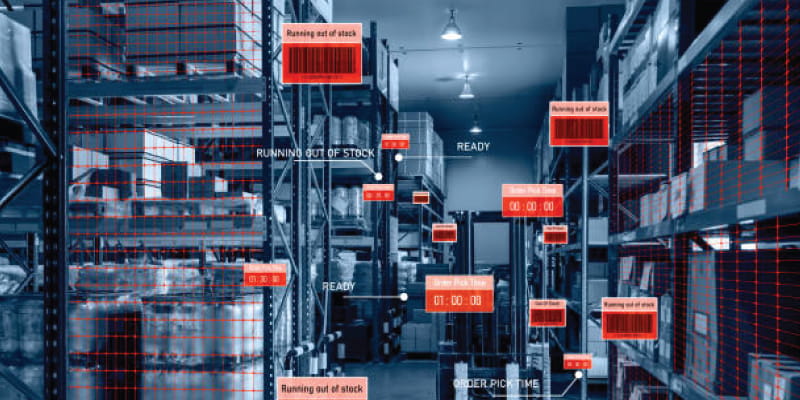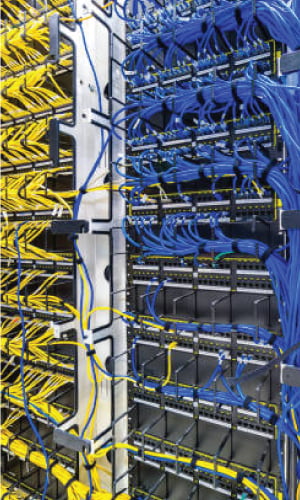Table of Contents
Introduction
In today’s fast-paced business world, having the right purchasing IT equipment is essential for staying competitive and maximizing productivity. The right IT tools can streamline operations and improve efficiency, from computing and networking equipment to peripheral devices. However, choosing the best IT equipment for your office can be daunting, especially with the rapid technological advancements. But fear not, because in this comprehensive guide, we will walk you through everything you need to know about purchasing IT equipment for your office. We’ll discuss the importance of having the right IT equipment, the different types of equipment available, how to choose the right supplier, budgeting for your purchases, evaluating technical specifications, the procurement process, testing and implementation, maintenance and support, and even upgrading and replacing outdated equipment. By the end of this guide, you’ll be armed with the knowledge and confidence to make informed decisions when purchasing IT equipment for your office. Let’s dive in and transform your office into a tech-savvy powerhouse!
Understanding the Importance of Purchasing IT Equipment
Having the right IT equipment can significantly improve productivity and efficiency in your office. With modern technology constantly evolving, it’s crucial to have up-to-date equipment to keep up with the demands of your business operations.
Outdated IT equipment can lead to slow performance, frequent breakdowns, and security vulnerabilities. This could not only disrupt workflow but also put sensitive data at risk. Investing in new and reliable IT equipment can avoid these issues and ensure smooth day-to-day operations. Before purchasing IT equipment, consider compatibility with existing systems, scalability for future needs, and ongoing maintenance requirements. Evaluating these aspects will help you make informed decisions that align with your business goals.
Types of IT Equipment for Office Use
When setting up your office with the right IT equipment, there are a few key categories to consider. First and foremost, you’ll need computing equipment such as desktop computers, laptops, and servers. These will form the backbone of your office’s digital operations and ensure that employees have the tools to complete their work efficiently.
In addition to computing equipment, networking equipment is essential for creating a seamless and secure connection between devices in the office. This can include routers, switches, firewalls, and wireless access points. A reliable network infrastructure is crucial for maintaining productivity and communication within the workplace.
Peripheral devices round out the list of essential equipment for office use. Printers, scanners, monitors, keyboards, and mice all fall into this category. While they may seem like smaller components compared to computing or networking equipment, these peripherals play a vital role in day-to-day tasks and overall efficiency.
Choosing the Right IT Equipment Supplier
Selecting the perfect supplier for your IT equipment can be an exhilarating journey. With so many options available, it’s like being a kid in a candy store! Consider factors such as reliability, reputation, and customer service when deciding. You want to partner with a supplier committed to providing top-notch products and excellent support.
When evaluating the quality of IT equipment different suppliers offer, let your inner Sherlock Holmes shine! Take the time to research reviews and testimonials from other customers. Look for certifications or industry awards that showcase a supplier’s dedication to delivering high-quality products. After all, you deserve nothing but the best for your office!
Comparing prices and warranties may sound mundane, but considering how much money you could save is pretty thrilling! Look for special promotions or bundle deals that can sweeten the pot. And don’t forget about warranties – they provide peace of mind knowing your investment is protected. So channel your inner savvy shopper and find that perfect IT equipment supplier!
Budgeting for IT Equipment Purchases
The first step is determining exactly what you need. From computers and servers to software and networking devices, making a comprehensive list of all the equipment required for your office is essential. Once you have a clear picture of your needs, it’s time to set a realistic budget. Setting a budget may sound daunting, but it doesn’t have to be! Take the time to research prices for different types of IT equipment and consider any additional costs, such as warranties or maintenance plans. With a clear understanding of the market and your specific requirements, you can establish a budget that aligns with your office’s financial goals.
Don’t let budget constraints hold you back from acquiring essential IT equipment for your office. Explore financing options such as leasing or payment plans to help spread out the cost over time. Many vendors offer flexible financing arrangements that make purchasing IT equipment more manageable for businesses of all sizes.
Evaluating IT Equipment Specifications
Delving into the technical details with enthusiasm and curiosity is essential when evaluating IT equipment specifications. Understanding the various technical specifications, such as processing speed, memory capacity, and storage options, can be an exciting journey of discovery. Embracing this process allows you to truly appreciate the capabilities of different equipment and make informed decisions for your office.
Assessing compatibility with existing systems may sound daunting, but it presents an opportunity to explore new possibilities. The thrill of finding the perfect match between new IT equipment and your current infrastructure is akin to solving a complex puzzle. It’s a chance to uncover synergies that can enhance productivity and streamline operations within your office environment.
Considering future scalability might seem like gazing into a crystal ball, but it’s an exhilarating exercise in strategic planning. Anticipating potential growth and expansion opens up doors to innovative technologies and solutions. This forward-thinking approach ensures that your IT equipment meets current needs and prepares you for exciting opportunities.
Procurement Process for IT Equipment
The procurement process for IT equipment is an exciting journey that begins with requesting quotes from various suppliers. This step allows you to explore options and compare prices, ensuring you get the best deal for your office needs.
Once you have received quotes, the negotiation phase kicks in, where you can discuss terms and conditions with the suppliers. This part of the process is thrilling as it involves finding common ground and reaching mutually beneficial agreements that benefit both parties. The exhilarating moment of placing the purchase order comes after all negotiations are settled. It is satisfying to know that your office will soon be equipped with top-notch IT gear to enhance productivity and efficiency.
Testing and Implementing IT Equipment
Get ready to witness the future of your office environment! Once you purchase the latest IT equipment, you must put it through its paces. Conducting performance tests will ensure that each piece of equipment meets your high standards for functionality and reliability. This exciting phase lets you see firsthand how these technological marvels will revolutionize your team’s operations.
But testing is just the beginning – once you’ve confirmed that the IT equipment performs as expected, it’s time to train your employees on how to use it effectively. Imagine their excitement as they learn about all the new features and capabilities! This training phase is crucial in ensuring a smooth transition from old systems to new ones, guaranteeing minimal disruption in productivity while maximizing efficiency.
Finally, integrating IT equipment into the office environment is where everything comes together. Witness as desks light up with state-of-the-art computers, printers hum with activity, and servers quietly power the backbone of your operations. Seeing it all seamlessly come together is an exhilarating experience that marks a significant milestone in propelling your office into a technologically advanced future.
Maintenance and Support for IT Equipment
Developing a maintenance schedule is critical when keeping your IT equipment in top shape. This proactive approach can help prevent unexpected breakdowns and ensure everything runs smoothly. You can minimize the risk of costly repairs by setting aside regular time for maintenance tasks such as software updates, hardware checks, and system clean-ups.
In addition to having a maintenance schedule in place, exploring support options from suppliers is another important aspect of ensuring the longevity of your IT equipment. Many suppliers offer support packages that can assist with troubleshooting, repairs, and even replacements if needed. Taking advantage of these support options can give you peace of mind, knowing that help is readily available.
Troubleshooting standard IT equipment issues alone can save time and money. Familiarizing yourself with common problems, such as network connectivity issues or software glitches, can empower you to address these issues quickly without relying on external support. Consider providing training for your staff on basic troubleshooting techniques so that everyone in the office can contribute to maintaining the health of your IT equipment.
Conclusion
It’s time to recognize the signs that your IT equipment is due for an upgrade. Whether it’s constant crashes, slow processing speeds, or simply an inability to keep up with modern software demands, outdated equipment can hinder productivity and frustrate employees. But fear not! Proper planning and a clear understanding of your technology needs allow you to transition to new, seamless, improved IT equipment.
Planning for technology upgrades can be a manageable task. Take the time to assess your current infrastructure and identify areas where improvements are needed. Consider storage capacity, processing power, and compatibility with essential software applications. Creating a thorough plan for upgrading your IT equipment will ensure that the transition is smooth and efficient, minimizing downtime and disruption for your team.
FAQs
What factors should I consider when purchasing IT equipment for my office?
When purchasing IT equipment for your office, you should consider factors such as the specific needs and requirements of your office, the budget you have allocated for the equipment, the compatibility of the equipment with your existing systems, the reliability and reputation of the manufacturer or brand, and the level of technical support and warranty provided.
What types of IT equipment are commonly needed in an office?
Common types of IT equipment needed in an office include computers (desktops or laptops), printers, scanners, routers, switches, servers, storage devices, monitors, keyboards, mice, and various software applications.
How can I determine the appropriate specifications for my IT equipment?
To determine the appropriate specifications for the IT equipment you need, you should consider factors such as the intended use of the equipment, the required processing power, storage capacity, memory, connectivity options, and any specific software or hardware requirements. Consulting with IT professionals or conducting research can help you make informed decisions.
Should I purchase IT equipment from a local vendor or an online retailer?
The decision to purchase IT equipment from a local vendor or an online retailer depends on various factors. Local vendors may offer personalized service, immediate support, and the ability to inspect the equipment physically. On the other hand, online retailers often provide a more comprehensive selection, competitive prices, and convenient delivery options. Consider your needs, preferences, and the vendor’s reputation before deciding.
What are some important considerations for IT equipment maintenance and support?
Regarding IT equipment maintenance and support, it is essential to consider factors such as technical support from the manufacturer or vendor, warranty coverage, the ease of obtaining replacement parts, the availability of software updates and patches, and the cost of ongoing maintenance. Regular backups, security measures, and proper equipment handling and cleaning are crucial for optimal performance and longevity.














